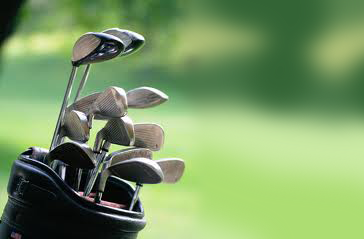Are you wasting money on clubs you seldom play? More importantly, are you denying yourself opportunities to play better and more enjoyable golf, simply because your bag is equipped with clubs totally unsuited for your game?
Below is a TWGT Video on importance of club set makeup.
Since the 1980s, golf equipment manufacturers have forced major changes in the specifications of the clubs with which we all play the game. It all started when OEMs (original equipment manufacturers) started messing with iron loft, which up until the 1980s were set to standards that every club manufacturer respected and adhered to. For example: I would wager that an expert in clubfitting would echo a resounding “yes” to both questions for the majority of golfers. And here’s why:
- 3-irons, a tough-to-swing 24? club on a good day, have been de-lofted over the past three decades to 18? to 20? (becoming LESS than a 2-iron);
- 4-irons, which historically were set at a 28? loft, were de-lofted to between 21? and 23? (becoming less than a 3-iron);
- 5-irons, which before had been set with a 32? loft, have been de-lofted to between 23? and 25? (thus becoming what a 3-iron used to be).
This has also been done in varying degrees to the 6, 7, 8 and 9 irons. Why? Well, somebody got the bright idea that if every iron in the bag was de-lofted, he could market them with the appealing claim: “OUR CLUBS HIT A GOLF BALL OVER A FULL CLUB LONGER!”
Which of course is exactly what happened. However, rolling back lofts was little more than a way to sell tons of “new and improved” golf clubs to appeal to golfers’ desires for more distance. But even more infamous and damaging was the fact that from this shrinking of lofts, the 3, 4 and 5 irons swiftly became a whole lot harder to impossible to hit for the vast majority of golfers.
Take a look at your own bag: Which clubs are shiny, and which are well worn? The higher number irons even have more worn-down grips. And the lower number irons? They’re practically untouched.
Designing clubs with cavity backs or exotic metals really didn’t help hitting those “new and improved” de-lofted lower number clubs either. So what did the industry do to compensate (and sell more golf clubs)? For a time, there was a small effort for high-lofted fairway metals to take up the slack, but higher numbered fairway woods somehow fall short of satisfying most golfers’ egos.
That’s when hybrids were introduced.
So this is why we’re at this point—where golfers seldom use their 3, 4 and even their 5 irons. Plus, for the most part, they’re also very confused about hybrids… which for most of us are necessary for consistently hitting longer-iron distances into the greens and on longer par-3 holes.
The fact is, hybrids are a wonderful product, an ingenious alternative to hitting today’s hard-to-hit long irons. They can be:
- Easier to get airborne than any iron of the same loft;
- Possibly more accurate on longer length par-3s;
- More consistent from both short and long grass;
- Effective from hard-pan; and
- Better suited for bump and run shots from around the greens.
They really are easier to hit high to fly than irons of the same loft if…
… hybrids are professionally fitted to the golfer—when they’re built with quality designed components and custom built to fitting specifications that ideally match each golfer’s individual swing characteristics that allow the hybrids to blend seamlessly with the conventional irons for consistent distance gaps.
We always advocate professional club fitting—it’s the single best way for any golfer to play better—but when it comes to hybrids, professional clubfitting is absolutely critical.
Furthermore, I invite you to watch this special video that details the importance of club set makeup. And if you’re really keen, take a few moments and watch the following video on why professional clubfitting is so important.
I promise you that these two videos will change not only how you look at golf, but how you will play it … with genuine and renewed enjoyment … for a lifetime. To find a clubfitter with whom to work to be properly fit, take a moment to click on the Find a Clubfitter locator found in the middle of the home page on www.wishongolf.com.
Take a look at what Colorado Avid Golfer magazine wrote about this same topic (Click Here).
Take a look at an article Tom wrote for GolfWRX that explains the importance of being professionally fit by a custom clubfitter (Click Here).
Tom recently was interviewed by Tee It Up, a nationally syndicated radio program based in Las Vegas. Listen to that interview by Clicking Here, which talks about the importance of why a golfer should be professionally custom fit before he or she purchases a set of golf clubs.
Questions? email me at: [email protected] or call 204-470-3262

